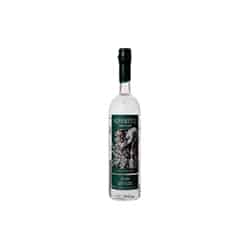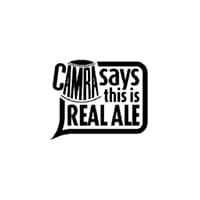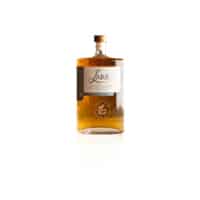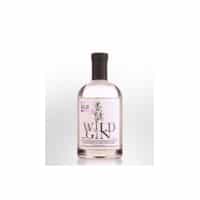June 28, 2024 7:07 pm
Sipsmith founders: Jared Brown (Master Distiller), Sam Galsworthy and Fairfax Hall
Where did the Australian Craft Gin movement come from? The booming Craft Gin market over the last five years started with the Australian Craft Whisky movement of the 1990’s and 2000’s. There are now over 150 Craft Gin Distilleries in Australia and it seems like a new couple each month. So where did it all begin?
Australian Craft Whisky and Gin distillers were not that far behind other parts of the world, but to get some context, let’s go to London, historically the heart of Gin. In the 18th century things took off, in 1726 there were about 1,500 stills in houses alone. Controls were put on, technology improved, companies grew and everything changed. By 1820, there was not one distillery in London. Nearly 200 years later, in 2009, the first copper pot distillery in modern times was opened.

Sipsmith started a revival. In 2010 there were about 20 distilleries in all of UK, now there are 24 in London alone.
The Craft Gin boom may have started then, but it is generally recognised that its roots go back nearly 40 years. Consider the parallels to the microbrewing and brewpubs movement that began in the United Kingdom in the 1970’s. This was, in turn, was stimulated by the popular “Campaign for Real Ale”, encouraging the use of traditional brewing methods.

Although traditional artisanal brewing existed in Europe for centuries, the rise and spread to other countries probably started with the constant buy outs and consolidation of the large and then huge, multinational beer companies. Cost reduction, simplification, rationalisation: all words that meant people’s beers disappeared or weren’t the same anymore. The big companies weren’t listening to their customers. Forget about innovation, even good products were disappearing. They were busier with profits and market share.
Cutting of the Red Tape
That was Europe, but something then happened over the other side of the Atlantic that was important. In came to pass that, over time, many countries’ regulations limited smaller distilleries. Maybe the reason was to “control” alcohol production. Conspiracy theorists might ponder the benefits to large distillers. Whatever the origin, in 1979, the USA Governmentderegulated the brewing industry and although it took some time, microbreweries began to take off there. In the 1980’s and 90’s craft beer was well established in many countries and people were willing to try different and innovative beers. It was only a matter of time then, that Craft Spirits followed.
It is interested to read that, in their book, “The Art of Distilling Whiskey”, Bill Owens and Alan Dikty attribute the US rise in craft spirit distillation to i) craft brewing, ii) the deregulation of private, non-commercial distilleries in New Zealand in 1996 and iii) with information sharing by the internet. US distillers actually sourced and exchanged a lot of information with New Zealand micro-distillers. Australia’s own deregulation occurred in 1992, even before that of New Zealand.
Quick out of the Blocks
The recent history of commercial production of Australian Craft Spirits is well documented, starting with the opening of the Lark Distillery in Richmond, Tasmania in 1992. Bill Lark is rightfully venerated. Twenty years later Australian Craft Whisky has won awards worldwide, including in 2014, when Sullivans Cove French Oak Cask won an industry award for the best single malt whisky, the first time a distillery outside Scotland or Japan has won. Australian Whiskies are probably better known overseas than at home.

In 2007 the first dedicated Gin distillery was established by Jon and Sarah Lark (yes, Brother of Bill) on Kangaroo Island (KIS).

So, by 2018 Australia has well over 100 distilleries making Craft Whisky, Rum, Gin, Vodka, Schnapps, Amaro (Campari-type), Vermouth, Moonshine and so much more. The quality standards are high, awards are being won, exports are growing. Are we possibly heading on the same path as our world-renowned wines?
What Now?
Exports have to be the way forward. Maybe not for everyone, but maybe enough to yet again grow an industry that further demonstrates our innovation, or dedication and our abilities to excel – as long as the Government either gets out of the way – or maybe even helps.
Australians travel well. Whether leading corporations, going on tours, hanging around trendy placesor even behind bars – not the prison type –you’ll find us. This is true both for ourselves as people as well as for our export products – beer and wine of course. Our image overseas – often referred to as “Brand Australia” – has changed over time and the way we market our successful liquor brands as changed along with it.

In the 1980’s it was the now cringeworthy: prawns on BBQ’s, Cork Hats and “That’s a knife!”. Foster’s Lager campaigns fitted right in. The 90’s saw our people and our lifestyle front and centre and wines started to show up in campaigns. The Sydney Olympics in 2000 was an amazing chance to promote to 3.5 billion viewers. Lindeman’s wines had recouped all their costs six months before the games even started. We started to focus on natural beauty and lifestyle themes, as were Green values, indigenous culture, multiculturalism, quirkiness and fun. In the latest campaign we have Liam Hemsworth espousing the fact that you should “feel” Australia.

I can see a time, very soon – if not already – that drinkers overseas can enjoy an Australia Craft Gin and feel the flavours of Australia.
